
Manufacturing company Dover (NYSE: DOV) fell short of the market’s revenue expectations in Q3 CY2025 as sales rose 4.8% year on year to $2.08 billion. Its non-GAAP profit of $2.62 per share was 4.5% above analysts’ consensus estimates.
Is now the time to buy Dover? Find out by accessing our full research report, it’s free for active Edge members.
Dover (DOV) Q3 CY2025 Highlights:
- Revenue: $2.08 billion vs analyst estimates of $2.10 billion (4.8% year-on-year growth, 1% miss)
- Adjusted EPS: $2.62 vs analyst estimates of $2.51 (4.5% beat)
- Adjusted EBITDA: $542.7 million vs analyst estimates of $485.8 million (26.1% margin, 11.7% beat)
- Management raised its full-year Adjusted EPS guidance to $9.55 at the midpoint, a 1.1% increase
- Operating Margin: 18.2%, up from 16.8% in the same quarter last year
- Free Cash Flow Margin: 17.8%, up from 15.9% in the same quarter last year
- Organic Revenue was flat year on year vs analyst estimates of 2.7% growth (223.1 basis point miss)
- Market Capitalization: $22.99 billion
Company Overview
A company that manufactured critical equipment for the United States military during World War II, Dover (NYSE: DOV) manufactures engineered components and specialized equipment for numerous industries.
Revenue Growth
Examining a company’s long-term performance can provide clues about its quality. Any business can have short-term success, but a top-tier one grows for years. Over the last five years, Dover grew its sales at a sluggish 3.5% compounded annual growth rate. This was below our standard for the industrials sector and is a tough starting point for our analysis.
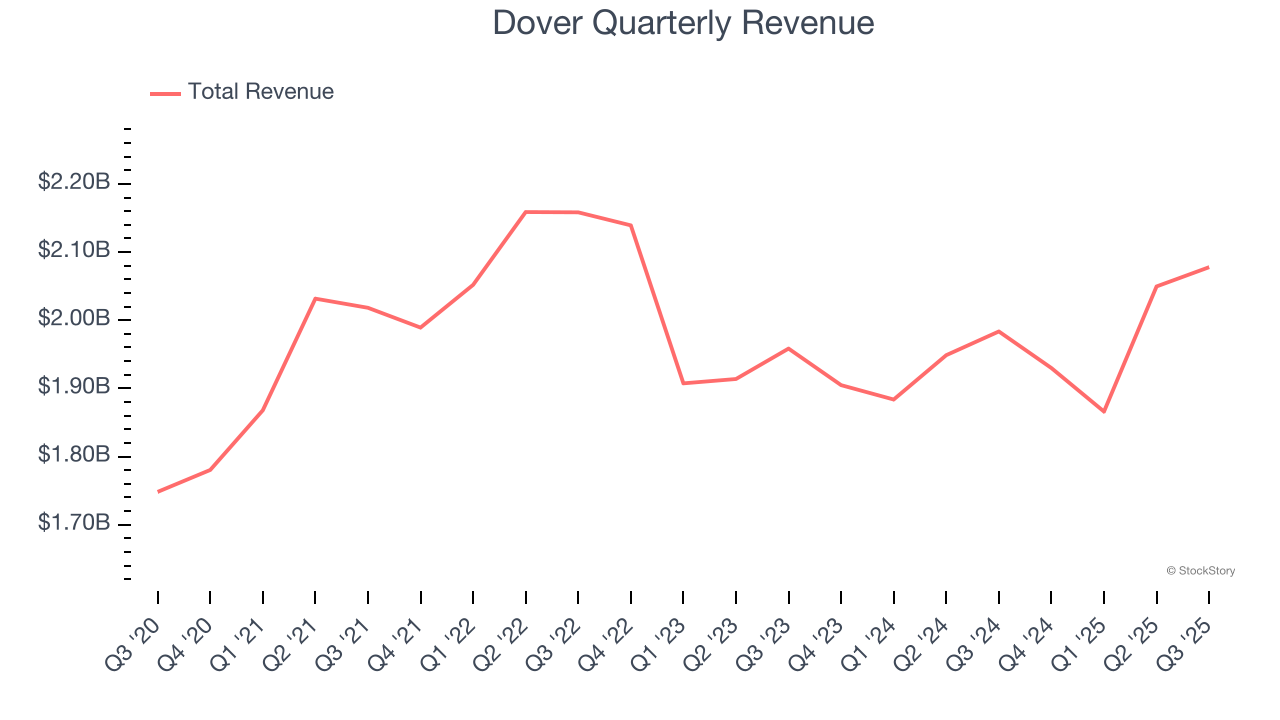
We at StockStory place the most emphasis on long-term growth, but within industrials, a half-decade historical view may miss cycles, industry trends, or a company capitalizing on catalysts such as a new contract win or a successful product line. Dover’s recent performance shows its demand has slowed as its revenue was flat over the last two years. 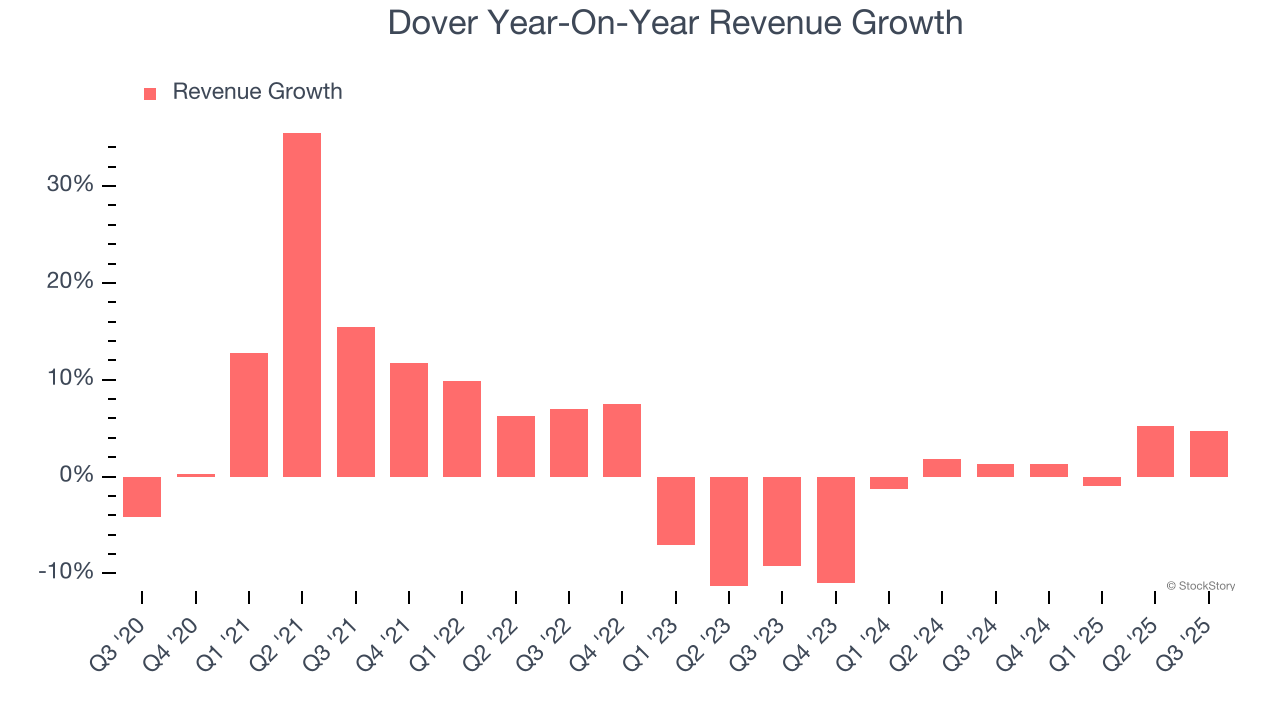
We can dig further into the company’s sales dynamics by analyzing its organic revenue, which strips out one-time events like acquisitions and currency fluctuations that don’t accurately reflect its fundamentals. Over the last two years, Dover’s organic revenue was flat. Because this number aligns with its two-year revenue growth, we can see the company’s core operations (not acquisitions and divestitures) drove most of its results. 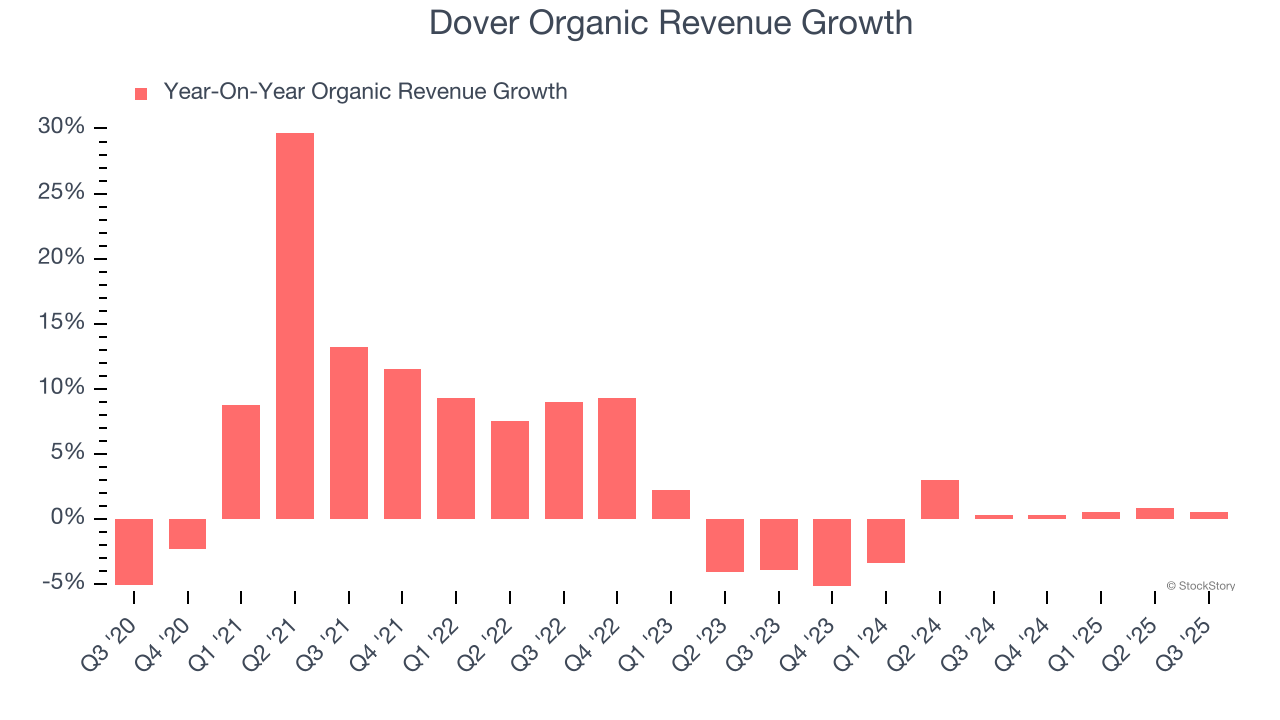
This quarter, Dover’s revenue grew by 4.8% year on year to $2.08 billion, falling short of Wall Street’s estimates.
Looking ahead, sell-side analysts expect revenue to grow 6.6% over the next 12 months. Although this projection indicates its newer products and services will fuel better top-line performance, it is still below the sector average.
Today’s young investors won’t have read the timeless lessons in Gorilla Game: Picking Winners In High Technology because it was written more than 20 years ago when Microsoft and Apple were first establishing their supremacy. But if we apply the same principles, then enterprise software stocks leveraging their own generative AI capabilities may well be the Gorillas of the future. So, in that spirit, we are excited to present our Special Free Report on a profitable, fast-growing enterprise software stock that is already riding the automation wave and looking to catch the generative AI next.
Operating Margin
Dover’s operating margin might fluctuated slightly over the last 12 months but has generally stayed the same, averaging 16.1% over the last five years. This profitability was elite for an industrials business thanks to its efficient cost structure and economies of scale. This result isn’t surprising as its high gross margin gives it a favorable starting point.
Analyzing the trend in its profitability, Dover’s operating margin might fluctuated slightly but has generally stayed the same over the last five years. This raises questions about the company’s expense base because its revenue growth should have given it leverage on its fixed costs, resulting in better economies of scale and profitability.
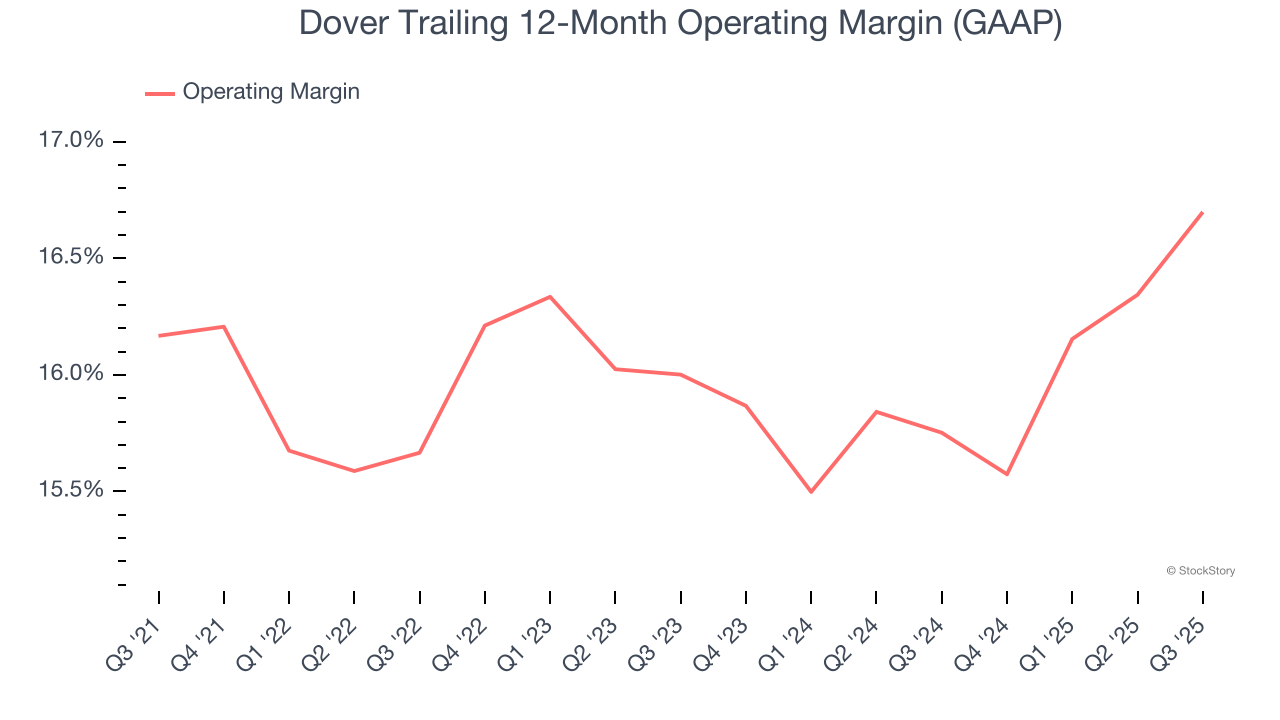
In Q3, Dover generated an operating margin profit margin of 18.2%, up 1.3 percentage points year on year. The increase was encouraging, and because its operating margin rose more than its gross margin, we can infer it was more efficient with expenses such as marketing, R&D, and administrative overhead.
Earnings Per Share
Revenue trends explain a company’s historical growth, but the long-term change in earnings per share (EPS) points to the profitability of that growth – for example, a company could inflate its sales through excessive spending on advertising and promotions.
Dover’s EPS grew at a solid 10.5% compounded annual growth rate over the last five years, higher than its 3.5% annualized revenue growth. This tells us the company became more profitable on a per-share basis as it expanded.
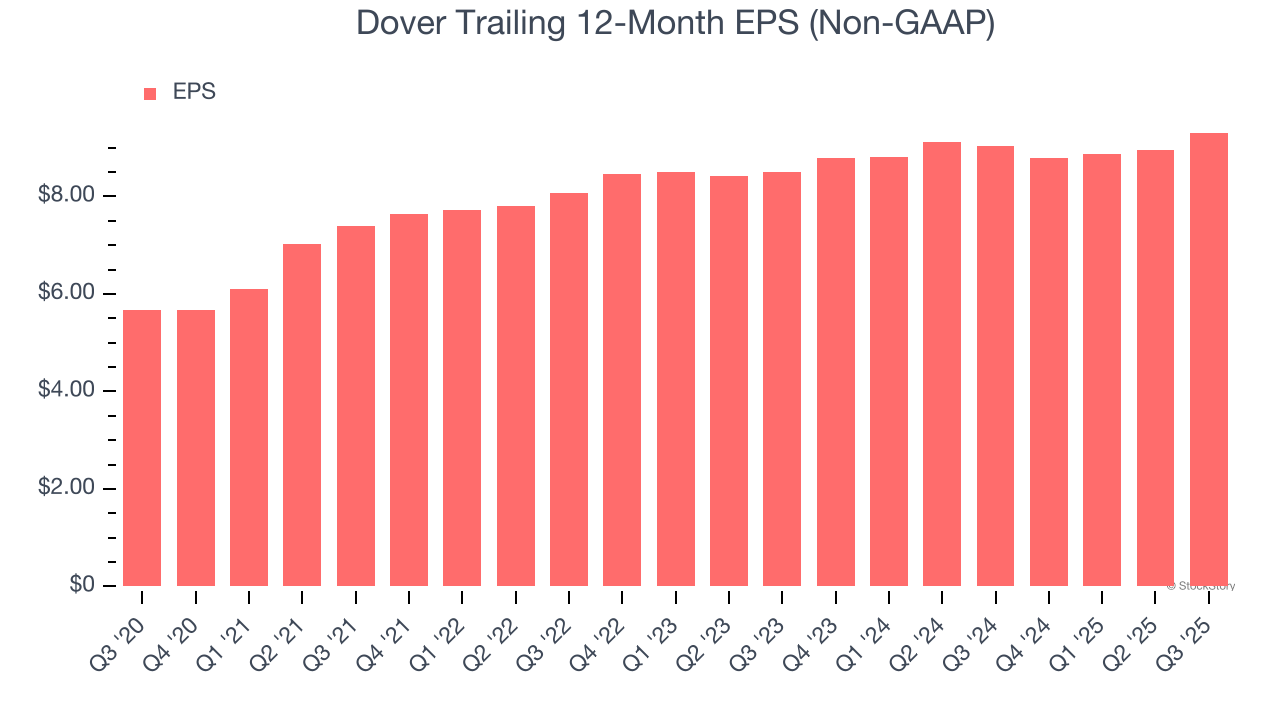
Diving into the nuances of Dover’s earnings can give us a better understanding of its performance. A five-year view shows that Dover has repurchased its stock, shrinking its share count by 5%. This tells us its EPS outperformed its revenue not because of increased operational efficiency but financial engineering, as buybacks boost per share earnings. 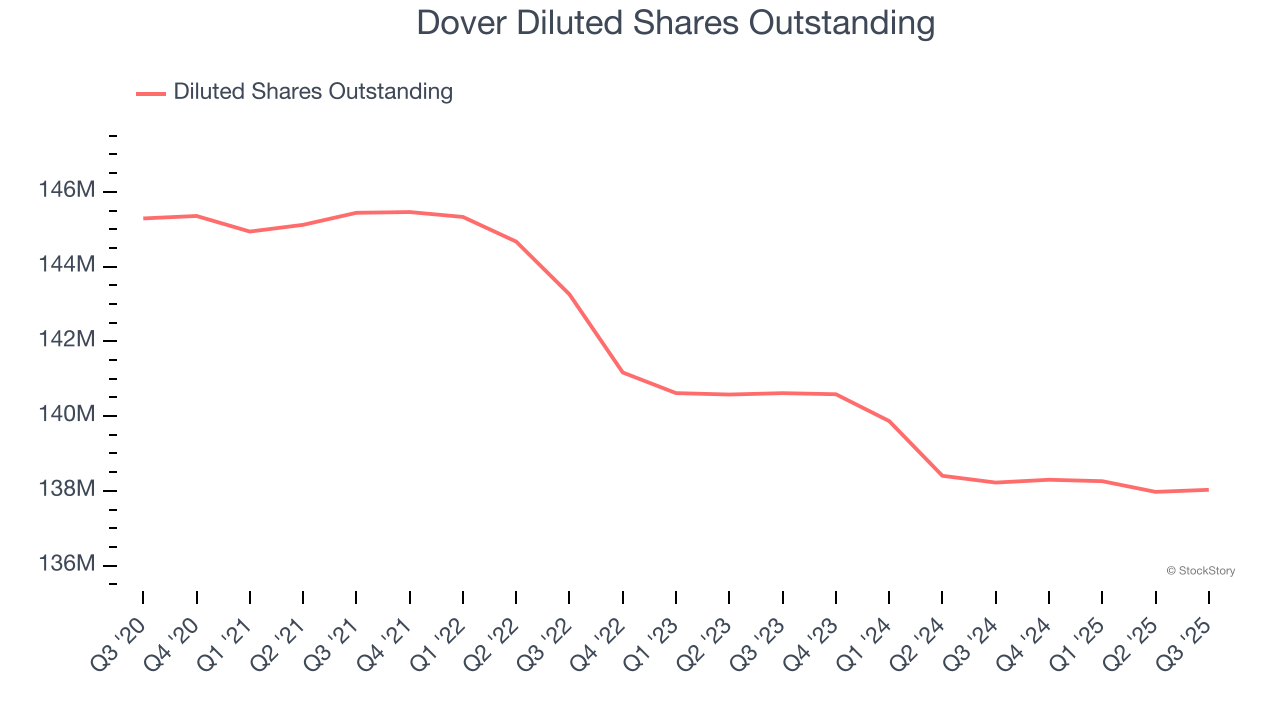
Like with revenue, we analyze EPS over a more recent period because it can provide insight into an emerging theme or development for the business.
For Dover, its two-year annual EPS growth of 4.7% was lower than its five-year trend. We hope its growth can accelerate in the future.
In Q3, Dover reported adjusted EPS of $2.62, up from $2.27 in the same quarter last year. This print beat analysts’ estimates by 4.5%. Over the next 12 months, Wall Street expects Dover’s full-year EPS of $9.31 to grow 9.4%.
Key Takeaways from Dover’s Q3 Results
We were impressed by how significantly Dover blew past analysts’ EBITDA expectations this quarter. We were also glad its full-year EPS guidance slightly exceeded Wall Street’s estimates. On the other hand, its organic revenue missed and its revenue fell slightly short of Wall Street’s estimates. Overall, this was a mixed quarter. The stock traded up 2.1% to $171.21 immediately after reporting.
So do we think Dover is an attractive buy at the current price? The latest quarter does matter, but not nearly as much as longer-term fundamentals and valuation, when deciding if the stock is a buy. We cover that in our actionable full research report which you can read here, it’s free for active Edge members.




